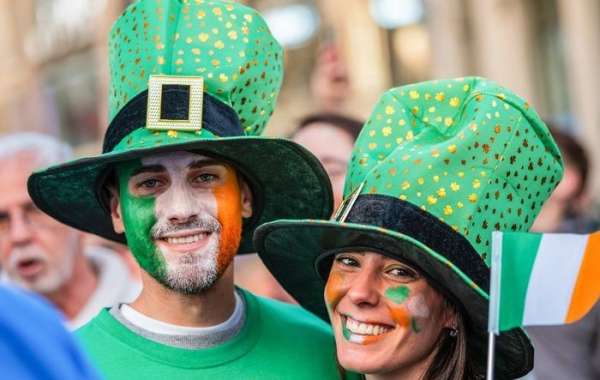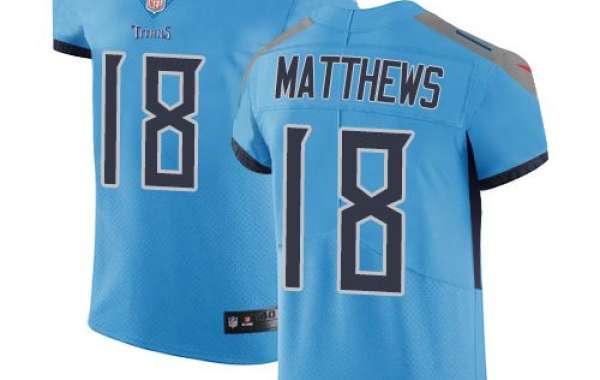Lucky St. Patrick’s Day traditions
How do you plan on celebrating St. Patrick’s Day? If you’re not sure how to honor this festive day on March 17, you’re in the right place. We’ve rounded up some fun and engaging St. Patrick’s Day traditions to make your celebration extra special.
Whether you’re spending the day with family, friends or even co-workers, these St. Paddy’s Day traditions are perfect for bringing everyone together. We also spoke with Christine Kinealy, director of Ireland’s Great Hunger Institute at Quinnipiac University, to better understand the reasons for these traditions—and the history behind them.
So gather your loved ones, put on your best green outfit and get ready for a day filled with good, old-fashioned St. Patrick’s Day fun!
Get Reader’s Digest’s Read Up newsletter for more holiday tips, fun facts, humor, cleaning, travel and tech all week long.
Irish soda bread
Boston Globe/Getty Images
“Letting the devil out” of Irish soda bread
There are many variations of Irish soda bread in America, but the traditional Irish version calls for just four ingredients: flour (often whole-meal flour), baking soda (called “bread soda” in Ireland), buttermilk and salt. Historically, this recipe could be made by anyone, thanks to the readily available ingredients and because it could be cooked in a cast-iron pot over a flame instead of in an oven, which most people didn’t have back in the day.
But for the bread to be lucky, you have to cut a cross on the top “to let the devil out” (as well as to release steam during cooking), a superstition held by both the Irish and Irish Americans. “In both Christian and pagan traditions, the cross is meant to ward off the devil and protect the household,” Kinealy explains. “But the baking of soda bread was not really a custom until the late 1800s.” Check out the video below to whip up a loaf of your own.
St Patrick's Day Festival In London
Tristan Fewings/Getty Images
Wearing green
One of the luckiest St. Patrick’s Day traditions is super simple: Just don the color green! The hue symbolizes Ireland’s lush landscape, and it’s why the Chicago River turns green on St. Patrick’s Day too. “Ireland itself is even known as the ‘Green Isle’ or the ‘Emerald Isle,'” Kinealy says.
But Americans might be surprised to learn that the color also has a political history behind it. “The wearing of green was a political and cultural identity movement in Ireland, and a stand against [British] colonialism,” Kinealy explains. The Irish ballad “Wearing of the Green” laments the unsuccessful rebel uprising of 1798, and the color remained symbolic for Irish nationalism leading up to the country’s independence in 1922. “In the Irish flag, which was first brought to Ireland in 1848, the green in the tricolor represents Catholics,” Kinealy says.
But if the green of the Irish flag represents Catholics, what do the other colors signify? The orange represents Protestants, and the white symbolizes peace between them. Although all three colors are part of the flag and Irish heritage, you should avoid wearing orange on St. Patrick’s Day, as the color is historically associated with those who supported the British crown before the country became independent.
Advertisement
Philadelphia Holds Its 53rd Annual St. Patrick's Day Parade
William Thomas Cain/Getty Images
Pinching those not wearing green
Legend has it that leprechauns can’t see you if you’re wearing the verdant color—and that if they do see you, they will pinch you! Likewise, tradition says you can pinch someone on St. Patrick’s Day who isn’t wearing green, but this may be more an Americanization than a true Irish custom. In fact, leprechauns originally wore red in Irish folklore.
“Pinching those not wearing green appears to be an American invention,” says Kinealy. That said, you may want to make sure you’re protected by wearing something green.
A performer gets a kiss from a young woman during the annual St Patricks Day Parade
Julien Behal - PA Images/Getty Images
Kissing someone who’s Irish
No doubt, you’ve heard the phrase “Kiss me, I’m Irish”—or at least seen it on a T-shirt. Where did this tradition come from? Although there appears to be no definitive source, the prevailing theory is that it refers to kissing the Blarney Stone in Ireland—so kissing an Irish person is the next best thing.
But although modern Americans might consider the Irish lucky, that may not be historically accurate. “The saying ‘the luck of the Irish’ is not of Irish origin—knowing the history, Ireland was typically unlucky,” Kinealy says. “In addition to the Great Hunger, the Irish poor witnessed many periods of starvation. When they immigrated [to America], they were discriminated against and there were many stereotypes surrounding them.”
Still, Irish pride (or Irish American pride) may rub off on you, no matter your heritage, on St. Paddy’s Day.
Drowning The Shamrock
norkim/getty images
“Drowning the shamrock”
One of the most famous good-luck charms is the shamrock. Legend has it that the good luck of this three-leaved plant began when it was a revered pagan symbol. The missionary Saint Patrick is said to have later used its three leaves to explain the Holy Trinity to the pagans (whether he actually did so is up for debate). Today, however, the shamrock remains a secular token of good fortune.
In Ireland, it’s considered lucky to “drown” the shamrock. “Traditionally, the shamrock was dunked into a glass of whiskey, the whiskey was then drunk and the shamrock at the bottom of the glass thrown over the drinker’s left shoulder,” Kinealy says. “Allegedly, it was St. Patrick himself who first dunked the shamrock in the glass of whiskey, after wearing it during his feast day—but this is highly unlikely, as he died before the day was celebrated.”
Advertisement
Advertisement
People Running In St Patricks Day Dash
Spondylolithesis/Getty Images
Joining a St. Patrick’s Day dash
Who would have thought that running a race would become a St. Patrick’s Day tradition? These events take place on St. Patrick’s Day and range from 5K runs to half marathons and more family-friendly walks—so yes, the kids can join in too.
Cheerful man and woman enjoying party
Klaus Vedfelt/Getty Images
Telling St. Patrick’s Day jokes
Get the Paddy started with a good ol’ St. Patrick’s Day joke or pun. From jokes about leprechauns and rainbows to wearing green and shamrocks, don’t hold back this year when it comes to tickling everyone’s funny bone. Here’s one the kids will eat up: What kind of spells do leprechauns use? Lucky charms!
Mother With Children Making Decorations For Saint Patricks Day
Anna Bizon/Getty Images
Making St. Patrick’s Day crafts
Who doesn’t love a good craft, especially on St. Patrick’s Day? Gather the kids and loved ones for a day of creativity. Have them DIY their own decorations or even costumes to wear for the celebrations and parades.
Advertisement
Advertisement
Couple With The Irish Flag Painted On Faces Saint Patricks Day Parade
Marcos del Mazo/Getty Images
Wearing a leprechaun hat
Speaking of crafting, try making your own leprechaun hat—with the kids or without! Purchase a kit or make one from scratch to wear throughout the day and truly embrace the St. Patrick’s Day spirit.
St Patricks Day Mini Cupcakes On A Serving Tray
RobIre/Getty Images
Baking St. Patrick’s Day treats
Little ones will especially love baking festive St. Patrick’s Day goodies! Make it a family tradition to bake your own green cupcakes, cookies or brownies. Decorate them with four-leaf clovers or green and gold sprinkles, and you’ve got a delicious holiday dessert.
St Patricks Day Sugar Cookies And Milkshake With Whipped Cream
NorthStar203/Getty Images
Making your own shamrock shake
We all know McDonald’s has its famous Shamrock Shake, but why not make your own at home? This tasty treat is made with vanilla soft serve, shamrock shake syrup and whipped cream—perfect for celebrating the holiday.
Advertisement
Advertisement
Reading irish book
Kinga Krzeminska/Getty Images
Sharing Irish blessings
“May the road rise to meet you. May the wind be always at your back.” This is just one of the many Irish blessings you can share with loved ones. These insightful quotes, which date back to Celtic times, have been cherished for centuries, making them perfect to express love, hope and gratitude for the day itself—and the days to come.
Irish folk dancer shoes
Sonja Filitz/Getty Images
Learning Irish dances
Learn an Irish jig this year, and showing off your moves will be a St. Patrick’s Day tradition for years to come! If you watch the St. Patrick’s Day parade, you’re sure to see this type of dancing, where dancers point their toes out, hop up and bring their right leg up to their left knee (and vice versa).
Irish dances may have originated from an “Irish Clan marching tune,” and Irish dancing may have ties to early forms of Celtic dance. “Celts were also said to have danced clockwise in circles on happy occasions and anti-clockwise when mourning,” according to Celtic Steps. “They often included movements which involved repeated tapping of the feet on one spot.”
Couple Watching TV with Snacks Top View
SeventyFour/Getty Images
Watching Irish movies
Whether you’re in the mood for a laugh, a crime story or some history, there’s an Irish movie out there for you. One film you might enjoy is The Wind That Shakes the Barley, about two brothers who fight in—and are later divided by—the Irish War of Independence. It’s a tear-jerker, but well worth watching to learn about the Anglo-Irish War fought from 1919 to 1921 between the Irish Republican Army and British forces.
Advertisement
Advertisement
DIY leprechaun trap with gold coins, rainbow and green ladder St Patricks Day background.
Detry26/Getty Images
Looking for leprechauns
“Catching leprechauns is more challenging than you think!” writes blogger Zina of Let’s Lasso the Moon in her blog post about catching leprechauns. This is a fun St. Patrick’s Day tradition for kids, especially if they love DIYs. According to Zina, kids can make their very own leprechaun traps using a cardboard box and random art supplies found at home. Create a small pot of “gold” using chocolate coins, DIY a rainbow and add glitter glue, a makeshift trip wire with sticky tape and whatever else you can think of to trap that tricky leprechaun!
Cascade of small golden coins from a terracotta pot
Antonello Proietti/Getty Images
Finding a pot of gold
Kids will especially love this St. Patrick’s Day tradition: going on a thrilling quest to find their very own pot of gold! Legend has it that the mischievous leprechauns hid the treasure at the end of the rainbow where it touches the Earth. You can easily recreate the excitement with a treasure hunt by using chocolate coins or even lottery tickets, Irish potatoes or any other treats that will make your family feel lucky when they’re discovered.
Happy St Pats Day, St Patricks Day Parade, South Boston, Massachusetts
Education Images/Getty Images
Putting up St. Patrick’s Day decorations
Like any other holiday, St. Patrick’s Day deserves to be celebrated with festive decor. Transform your space into a green wonderland. Think shamrock banners dancing in the air or green flags fluttering in the wind for the perfect touch of Irish charm.
Advertisement
Advertisement
irish potatoes with cinnamon
BeritK/Getty Images
Noshing on Irish potatoes
Irish potatoes are a time-honored Philadelphia tradition that have been spreading joy for more than a century. Even if you’re not in Philly, you can enjoy these delightful candy spuds that are coated with cinnamon and made with coconut cream. You’ll typically find them in candy stores, gift shops and supermarkets during the holiday. While the exact history behind their creation isn’t known, some have guessed that they are meant to commemorate the Irish Potato Famine that lasted from 1845 to 1851.
Four-leaf clover stands out against green leaves
Nadya So/Getty Images
Looking for four-leaf clovers
Shamrocks, which have three leaves, and the more elusive four-leaf clover may both be good-luck symbols, but they are not the same thing. “Biologically speaking, four-leaf clovers are extremely rare—usually they only have three clovers, and a fourth clover is a mutation,” says Kinealy. “There are likely 10,000 three-leaf clovers for every four-leaf clover.”
As Scientific American explains, using those odds, you’d need to scan a clover field of about 13 square feet to find one four-leaf clover—totally doable! And instead of counting each leaf, try scanning the clovers quickly: Your brain will be able to notice deviations in the pattern you see. Give it a try and incorporate it in your St. Patrick’s Day traditions: If you manage to find one, you’ll feel super lucky!
Common St Patricks Day Traditions Infographic
RD.com, Getty Images
St Patrick's Day Celebrations Return To The Streets Of Dublin
Charles McQuillan/Getty Images
Attending a St. Patrick’s Day parade
Seeing bagpipers marching past a crowd wearing green and waving mini Irish flags seems like one of the most quintessential St. Patrick’s Day traditions for those lucky enough to experience it. However, this is another tradition that actually originated in the United States—or, rather, the American Colonies.
One of the first St. Patrick’s Day parades is thought to have taken place in New York City in 1762, among Irish soldiers serving in the British army before the Revolutionary War. Later, when Irish immigrants who had flocked to the U.S. during the Great Famine in the 19th century were discriminated against in their new home, they used the parades to encourage and support pride in their heritage and culture.
The American St. Paddy’s celebrations were a way for the Irish diaspora to connect with their homeland, even for subsequent generations who had never been there.






